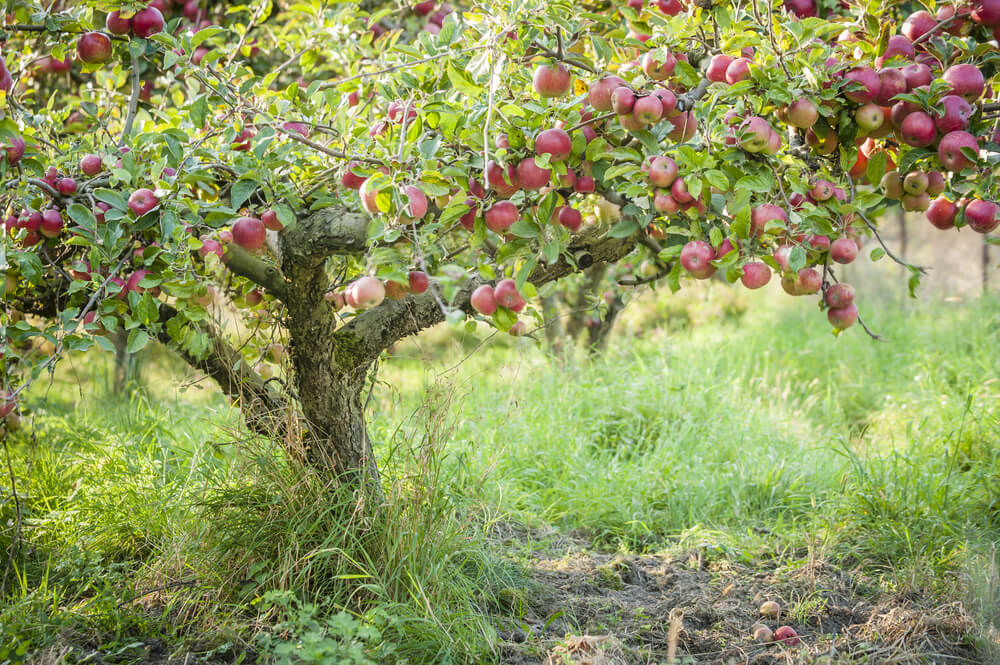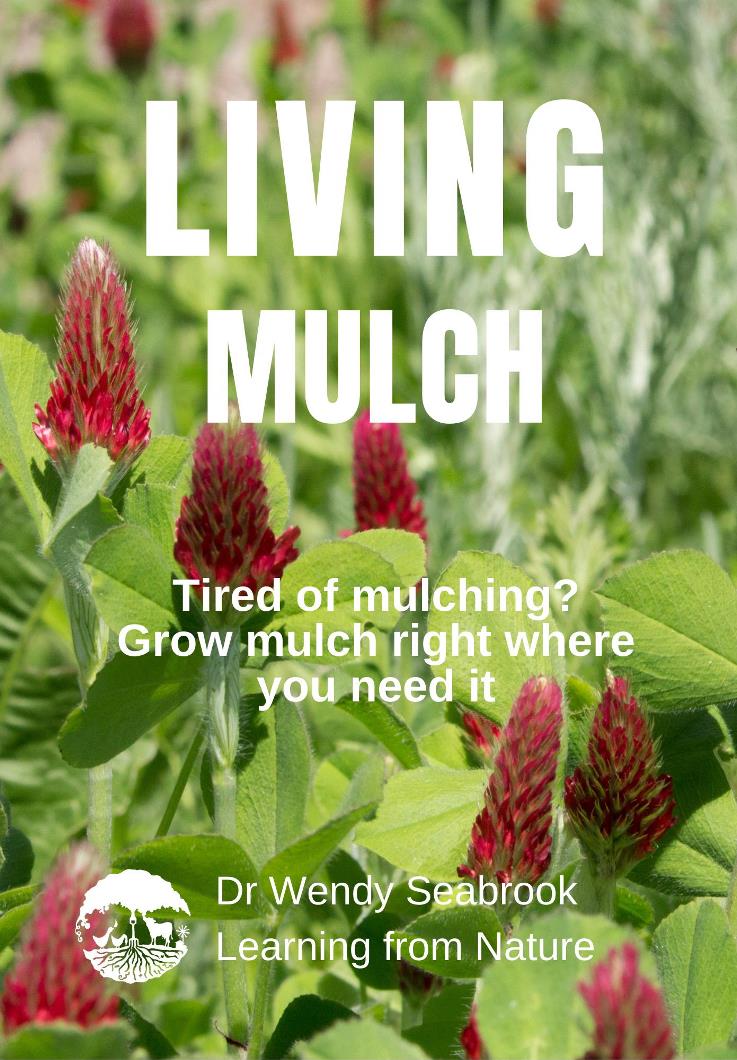Are you tired of your orchard just being a place where you work, instead of an enchanting space – like the beautiful orchards in the stories we grew up with… Where sheep and geese graze, birds, bees and other insects energetically flitter through the trees. Children hide, munching fruit in the long grass, while you make time to relax, lying, watching the dappled sunlight moving slowly through the leaves.
This is a true story about a woman living in far-off North Queensland who dreamed of creating an orchard that was productive, while also a place she loved spending time in.
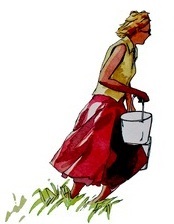
In reality though, rather than cultivating tranquillity, she seemed to be creating a workload for herself. Her time was taken up with mowing, brush cutting, weeding, fertilising, and mulching.
As she sat on the veranda, feeling tired and a little despondent, she decided to take a good look at the approach she was using to see if she could do things differently.
“First”, she thought, “I’ll tackle the aggressive introduced African grasses”.
Even though she mulched around her trees, the grass grew hoards of runners and innocent-looking, white delicate roots that kept invading the mulch.
So one day – when it wasn’t too hot – she ventured out with round bales of mulch and plastic weed mat to remove the grass from the rows of trees. She rolled them down one of her orchard rows, burying the grass. Later, once the grass was dead, she pulled out the weed mat from under the mulch, and gradually worked her way through the rest of her orchard, one row at a time.
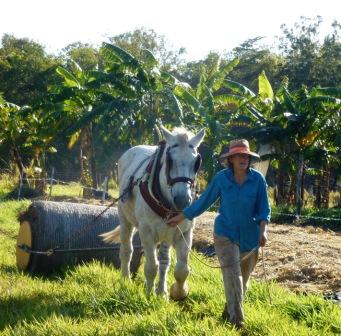
It was a relief, to see the grass dead, starting to decompose under the mulch. Her fruit trees began to grow with a vigour she could only have imagined.
Getting rid of the grass made such a difference
But then, she realised, “I’ve given myself an even bigger mulching job.”
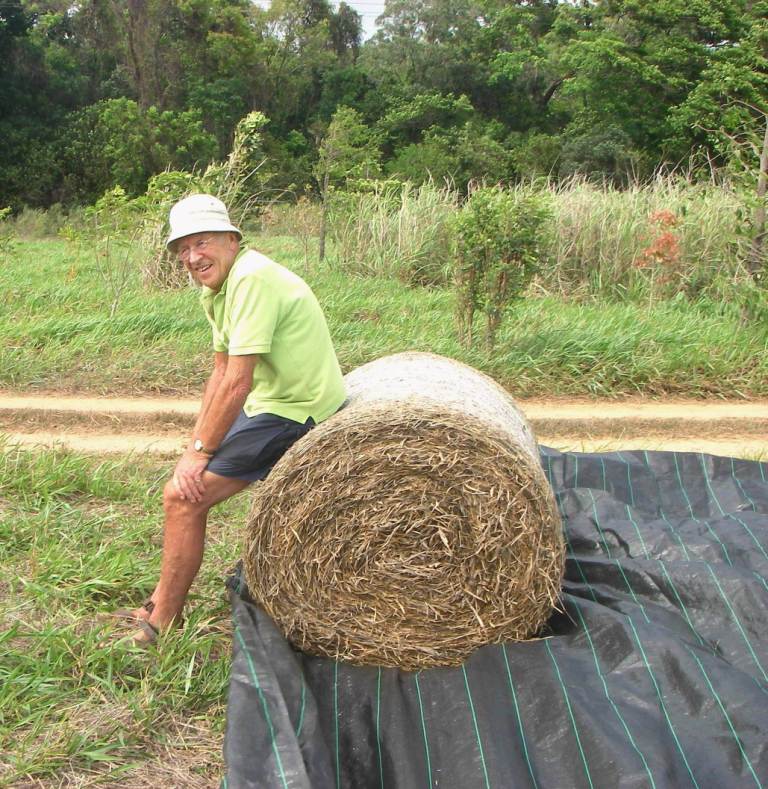
Mulching was hard work even with help of Marcus her heavy horse and her Dad! They spent days dripping with sweat, itching and getting covered with dust…
Frustrated, she had a ‘light bulb moment.’
“I’ll grow mulch right where I need it using ground cover plants – living mulch! Using ecological support species, like deep-rooted plants, legumes, and plants to attract beneficial insects and birds, I’ll create a species mix supporting the growth of my fruit trees rather than competing with them.”
“Like mulch, the plants will protect my soil, but they’ll also give my soil organisms a better diet supplying root exudates and organic materials from decaying roots. Better fed, the soil organisms can then get on with the job of recycling nutrients for my plants and improving soil structure.”
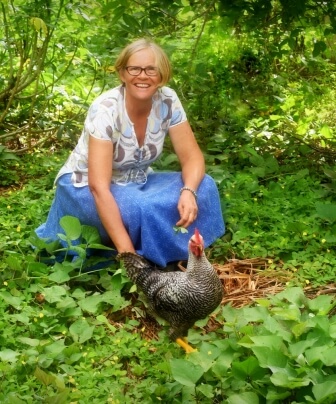
Now she loves wandering through her orchard. No grass to mow, bare ground to mulch, weeds to pull, and her soil visibly improving. There’s always some fruit to pick and chickens to watch busily foraging in the dappled sunlight. And merely a little machete maintenance, planting and seeding here and there…
Why not develop the Orchard of your Dreams?
As this story shows, there are practical things we can do to let Nature give us a helping hand. Switching from spreading mulch to growing living mulch is one of them. Living mulch helps us get our ecosystems functioning again and re-create places we love spending our free time in. Like the beautiful orchards in the stories we grew up with…
The regenerative practices you use will depend on your climate, other growing conditions, and what you grow. Start with small changes first. You’ll be inspired to keep growing…
These articles will help you on your journey:
- How to Grow Living Mulch
- What is Regenerative Farming and Gardening
- Principles of Regenerative Farming and Gardening
- What is Healthy Soil?
- How to Build Healthy Soil – Eco-logically
Or better still, get our handbook on Living Mulch.
The handbook walks you through a series of straightforward, tried and tested steps to prepare your site and select species producing a dense ground cover. The handbook is 100% focused on helping you achieve practical outcomes – saving you the time and trouble of finding your own way.
Featured image Ryszard Filipowicz. Illustrations © Laura Quincy Jones lauraquincyjones.com. Photos of Wendy – Richard Szczerba. Thanks also to Dianne Keller for sharing the art of ‘storytelling’.
